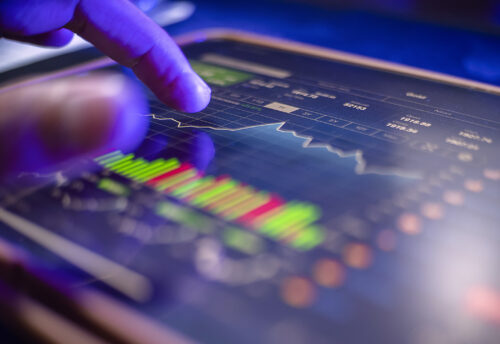
- November 8, 2023
- 398 Views
- 0 Likes
- Agriculture Technology, Automation & Integration
Advanced Technologies in Agriculture
Introduction
In the ever-evolving world of agriculture, technology has become the driving force behind increased productivity, sustainability, and profitability. Advanced agriculture technologies and precision farming practices have transformed the way we grow our food, manage resources, and mitigate environmental impacts. In this blog, we’ll explore how these innovations are revolutionizing the agriculture industry.
Smart Farming:The Foundation of Precision Agriculture
Precision farming, also known as smart farming, is a holistic approach to agriculture that leverages cutting-edge technologies to optimize every aspect of the farming process. Key components of smart farming include:
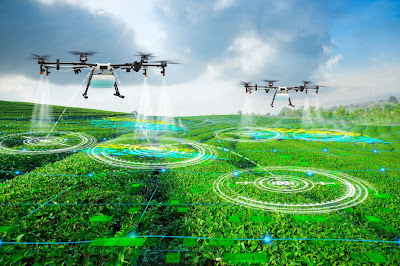
Satellite and Drone Imaging:
High-resolution satellite and drone imagery enable farmers to monitor crop health, detect diseases, and assess field conditions from the sky. This data informs decision-making and helps in the precise application of resources.
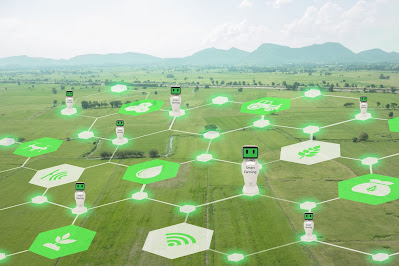
IoT and Sensors:
The Internet of Things (IoT) technology allows farmers to gather real-time data on soil moisture, temperature, and other critical factors. This data is used to make data-driven decisions regarding irrigation and fertilization.

Data Analytics:
Advanced analytics tools process vast amounts of data to generate insights, helping farmers optimize planting schedules, pest control strategies, and resource allocation.
Transforming Agriculture withGeospatial Technology
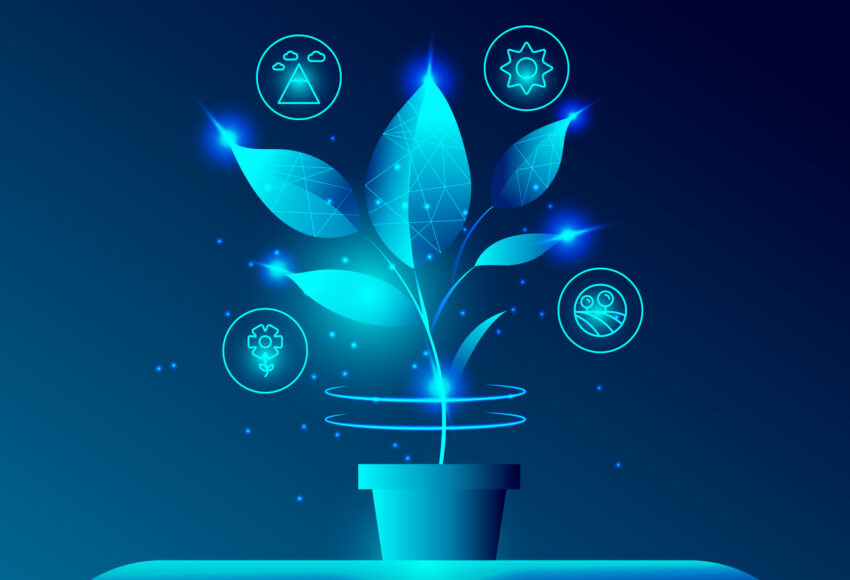
In the ever-evolving landscape of agriculture, technological advancements continue to play a pivotal role in revolutionizing traditional practices. One such game-changer is geospatial technology, which harnesses the power of satellite imagery, GPS, and mapping to enhance precision farming. This integration of geospatial technology in agriculture holds the potential to optimize resource utilization, improve crop yields, and promote sustainable practices.
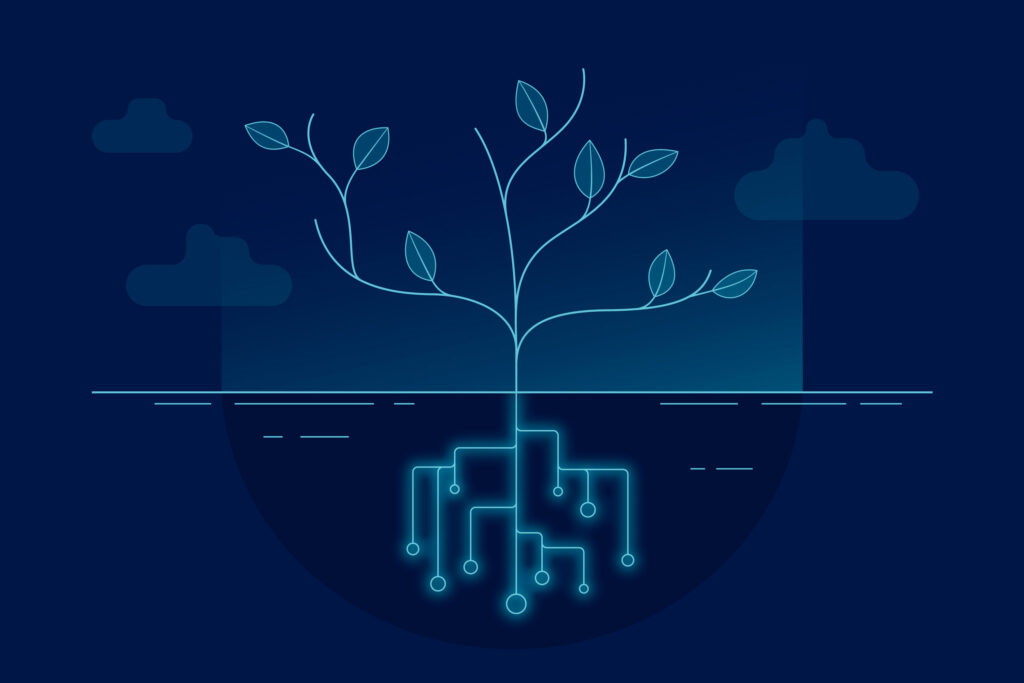
Geospatial technology in agriculture is transforming the sector by empowering farmers with accurate, timely, and actionable information. As the world grapples with the challenges of feeding a growing population and addressing environmental concerns, the integration of geospatial technology emerges as a key solution.
Autonomous Vehicles in Agriculture:

The agriculture industry has a long history of adapting to emerging technologies to increase efficiency and productivity. One of the latest technological revolutions in farming is the adoption of autonomous vehicles. These driverless machines are transforming the way we cultivate, manage, and harvest crops. In this blog, we’ll explore the exciting world of autonomous vehicles in agriculture and how they are reshaping the future of farming.
Benefits ofAutonomous Farming
The adoption of autonomous vehicles in agriculture offers numerous advantages for farmers and the industry as a whole:
Increased Efficiency:
- Autonomous machinery operates around the clock, eliminating the need for rest breaks. This boosts productivity and reduces the time required to complete tasks.
Cost Savings:
- Automation reduces labor costs and allows for more precise resource utilization, including water, fertilizer, and pesticides.
Precision Farming:
- Autonomous vehicles can work with pinpoint accuracy, leading to improved crop yields and reduced waste.
Safety:
- The use of autonomous vehicles minimizes the risk of accidents and injuries associated with manual labor and machinery operation.
Sustainability:
- Precision agriculture practices reduce the environmental footprint by minimizing resource usage and optimizing land management.
The Robotic Revolution in Farming:
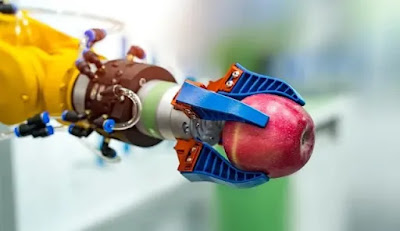
Agriculture, a cornerstone of human civilization, has always been subject to innovation and technology. In recent years, a significant transformation has taken place in the agricultural sector with the introduction of robotic technology. These advanced machines are changing the way we grow, harvest, and manage crops. In this blog, we’ll explore how robotic technology is revolutionizing agriculture and the numerous benefits it brings to the industry.
The Future ofAgriculture:

Gene Editing and Genetic Engineering:
- Genetic modification of crops for improved traits like drought resistance, pest resistance, and nutritional value will likely continue to advance. Techniques like CRISPR-Cas9 could become more precise and widely adopted.
Precision Agriculture:
- In 15 years, precision agriculture will be even more refined, with advanced sensors, drones, and satellite technology providing real-time data on soil health, weather conditions, and crop status. Artificial intelligence and machine learning will play a significant role in data analysis and decision-making.
Autonomous Farming:
- The use of autonomous vehicles and robots in agriculture will likely expand. These machines will become more sophisticated and capable, performing tasks such as planting, weeding, and harvesting with increasing autonomy.
Vertical Farming:
- Vertical and indoor farming systems will become more efficient and cost-effective, allowing for year-round production of crops in urban environments. Controlled environment agriculture will be optimized for space and resource use.
Biological Pest Control:
- Advanced biological control methods, including the use of beneficial insects and microorganisms, will reduce the need for chemical pesticides. This will enhance both sustainability and food safety.
Nanotechnology:
- Nanotechnology could enable the development of nanoscale sensors and delivery systems for targeted nutrient delivery and disease detection in crops.
Climate-Adaptive Crops:
- With the increasing challenges of climate change, crops that are specifically engineered for resilience and adaptability to changing conditions will become more prevalent.
Blockchain and Supply Chain Technology:
- Improved transparency and traceability in the food supply chain will become a priority. Blockchain technology will help ensure food safety and quality while reducing food fraud.
Artificial Intelligence and Machine Learning:
- AI and machine learning will continue to evolve, offering more advanced predictive models for crop management, disease detection, and yield optimization.
Aquaculture and Sustainable Seafood:
- The aquaculture industry will expand, with innovations in closed-loop systems, sustainable feed production, and responsible fish farming practices.
Food Waste Reduction:
- Advanced technologies will be deployed to minimize food waste across the supply chain, from farm to table, including improved preservation methods and smart packaging.
5G and Internet of Things (IoT):
- The rollout of 5G networks will enable more widespread use of IoT devices and sensors in rural areas, enhancing connectivity and data collection in agriculture.
Renewable Energy Integration:
- Agricultural operations will increasingly integrate renewable energy sources like solar and wind power to reduce carbon emissions and energy costs.
Labor-Saving Devices:
- Robotic exoskeletons, wearables, and other labor-saving devices will make physical labor less taxing for farm workers.
Use Cases for Automation and Autonomy Integration
- Incident Response: Automation can triage and resolve common incidents, while autonomous systems handle complex and novel issues.
- Resource Management: Automated scaling can handle routine resource adjustments, while autonomous systems optimize resource allocation based on demand patterns.
- Security: Automation can detect and mitigate known threats, while autonomous systems employ AI to identify and respond to new and emerging threats.

